 Libri di Francesco Casetti su Unilibro.it) Libri di Francesco Casetti su Unilibro.it)
|
|
2024 |
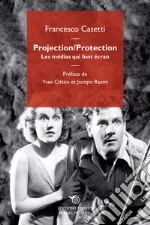 Title :
Projection-Protection. Les médias qui font écran
Title :
Projection-Protection. Les médias qui font écranAuthor: Casetti Francesco Publisher: Éditions Mimésis € 22,00
Scontato: € 20,90
|
|
|
2023 |
 Title :
Schermare le paure. I media tra proiezione e protezione
Title :
Schermare le paure. I media tra proiezione e protezioneAuthor: Casetti Francesco Publisher: Bompiani L'analisi incrociata della Fantasmagoria (fine del Settecento), del cinema (tra Otto e Novecento) e delle bolle immaginarie in cui ci rifugiamo quando ci immergiamo nel nostro computer (primi anni Duemila) permette a Francesco Casetti di avanzare una provocazione: gli schermi non sono protesi che estendono la nostra vista, ma qualcosa che ci protegge dall'esposizione diretta alle cose e agli eventi. Del resto siamo assediati dalle ricorrenti e crescenti paure di un mondo che minaccia di estinguersi e di estinguerci. Proteggere è un'azione positiva; tuttavia ha un costo. La protezione spesso implica una violenza pari a quella dei pericoli che vuole tener lontano; inoltre spesso limita e quasi soffoca coloro che vuole tenere al sicuro; infine spesso suscita più paure di quanto non ce ne fossero prima del suo intervento. Una concezione degli schermi come media protettivi ci aiuta anche a capire come acquisire una nuova sensibilità adeguata ai tempi che stiamo vivendo. € 25,00
Scontato: € 23,75
|
|
|
1917 |
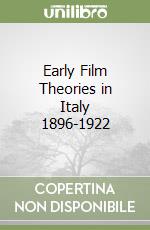 Title :
Early Film Theories in Italy 1896-1922
Title :
Early Film Theories in Italy 1896-1922Author: Casetti Francesco (EDT), Alovisio Silvio (CON), Mazzei Luca (CON) Publisher: Amsterdam Univ Pr € 82,50
|
|
|
1915 |
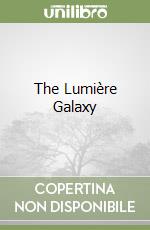 Title :
The Lumière Galaxy
Title :
The Lumière GalaxyAuthor: Casetti Francesco Publisher: Columbia Univ Pr € 36,10
|
|
|
2008 |
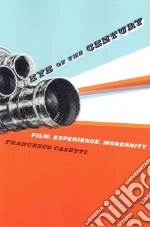 Title :
Eye of the Century
Title :
Eye of the CenturyAuthor: Casetti Francesco, Larkin Erin (TRN), Pranolo Jennifer (TRN) Publisher: Columbia Univ Pr Is it true that film in the twentieth century experimented with vision more than any other art form? And what visions did it privilege? In this brilliant book, acclaimed film scholar Francesco Casetti situates the cinematic experience within discourses of twentieth-century modernity. He suggests that film defined a unique gaze, not only because it recorded many of the century's most important events, but also because it determined the manner in which they were received. Casetti begins by examining film's nature as a medium in an age obsessed with immediacy, nearness, and accessibility. He considers the myths and rituals cinema constructed on the screen and in the theater and how they provided new images and behaviors that responded to emerging concerns, ideas, and social orders. Film also succeeded in negotiating the different needs of modernity, comparing and uniting conflicting stimuli, providing answers in a world torn apart by conflict, and satisfying a desire for everydayness, as well as lightness, in people's lives. The ability to communicate, the power to inform, and the capacity to negotiate-these are the three factors that defined film's function and outlook and made the medium a relevant and vital art form of its time. So what kind of gaze did film create? Film cultivated a personal gaze, intimately tied to the emergence of point of view, but also able to restore the immediacy of the real; a complex gaze, in which reality and imagination were combined; a piercing gaze, achieved by machine, and yet deeply anthropomorphic; an excited gaze, rich in perceptive stimuli, but also attentive to the spectator's orientation; and an immersive gaze, which gave the impression of being inside the seen world while also maintaining a sense of distance. Each of these gazes combined two different qualities and balanced them. The result was an ever inventive synthesis that strived to bring about true compromises without ever sacrificing the complexity of contradiction. As Casetti demonstrates, film proposed a vision that, in making opposites permeable, modeled itself on an oxymoronic principle. In this sense, film is the key to reading and understanding the modern experience. € 37,20
|
|
|
2007 |
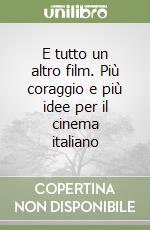 Title :
E tutto un altro film. Più coraggio e più idee per il cinema italiano
Title :
E tutto un altro film. Più coraggio e più idee per il cinema italianoAuthor: Casetti Francesco; Salvemini Severino Publisher: EGEA € 15,00
|
|
|
2005 |
 Title :
L'occhio del Novecento. Cinema, esperienza, modernità
Title :
L'occhio del Novecento. Cinema, esperienza, modernitàAuthor: Casetti Francesco Publisher: Bompiani Il cinema è stato l'arte che meglio ha saputo incarnare la grande svolta che il Novecento ha rappresentato nella Storia dell'uomo, non solo per la modernità tecnologica dei suoi mezzi, ma anche, e in senso più profondo, perché ha saputo dar voce e influenzare una nuova società con diverse esigenze estetiche. Alternando la rilettura di una quindicina di capolavori (da 'Quarto Potere' a 'Blow Up', da Griffith a Ejsenstejn) a squarci di teoria degli anni venti e trenta (Benjamin, Kracauer, Delluc, Epstein), e a un'analisi di alcuni procedimenti tecnici tipici del linguaggio cinematografico, Francesco Casetti guida il lettore alla riscoperta del cinema e della modernità, chiarendo perché il cinema vada considerato l'autentico 'occhio del Novecento'. € 21,00
Scontato: € 19,95
|
|
|
2004 |
 Title :
Il maglio. Proselitismo e sindacalizzazione nella CISL degli anni Cinquanta. Vol. 2
Title :
Il maglio. Proselitismo e sindacalizzazione nella CISL degli anni Cinquanta. Vol. 2Author: Carera Aldo; Manghi Bruno; Casetti Francesco Publisher: Edizioni Lavoro € 5,00
|
|
|
2002 |
 Title :
Il maglio. Proselitismo e sindacalizzazione nella CISL degli anni Cinquanta. Vol. 1
Title :
Il maglio. Proselitismo e sindacalizzazione nella CISL degli anni Cinquanta. Vol. 1Author: Saba Vincenzo; Casetti Francesco; Colasanto Michele Publisher: Edizioni Lavoro € 5,00
|
 Title :
Comunicative negotiation in cinema and television
Title :
Comunicative negotiation in cinema and televisionAuthor: Casetti Francesco Publisher: Vita e Pensiero € 6,00
|
|
2000 |
 Title :
L'occhio dello spettatore
Title :
L'occhio dello spettatoreAuthor: Casetti Francesco Publisher: EDUCatt Università Cattolica € 7,23
|
|
|
1999 |
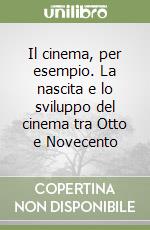 Title :
Il cinema, per esempio. La nascita e lo sviluppo del cinema tra Otto e Novecento
Title :
Il cinema, per esempio. La nascita e lo sviluppo del cinema tra Otto e NovecentoAuthor: Casetti Francesco Publisher: EDUCatt Università Cattolica € 5,68
|
|
|
1988 |
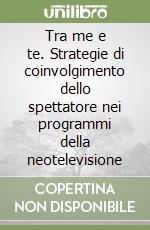 Title :
Tra me e te. Strategie di coinvolgimento dello spettatore nei programmi della neotelevisione
Title :
Tra me e te. Strategie di coinvolgimento dello spettatore nei programmi della neotelevisioneAuthor: Casetti Francesco Publisher: Rai Libri € 7,75
|
|
|
1986 |
 Title :
Dentro lo sguardo. Il film e il suo spettatore
Title :
Dentro lo sguardo. Il film e il suo spettatoreAuthor: Casetti Francesco; Eco E. (cur.) Publisher: Bompiani € 17,56
|